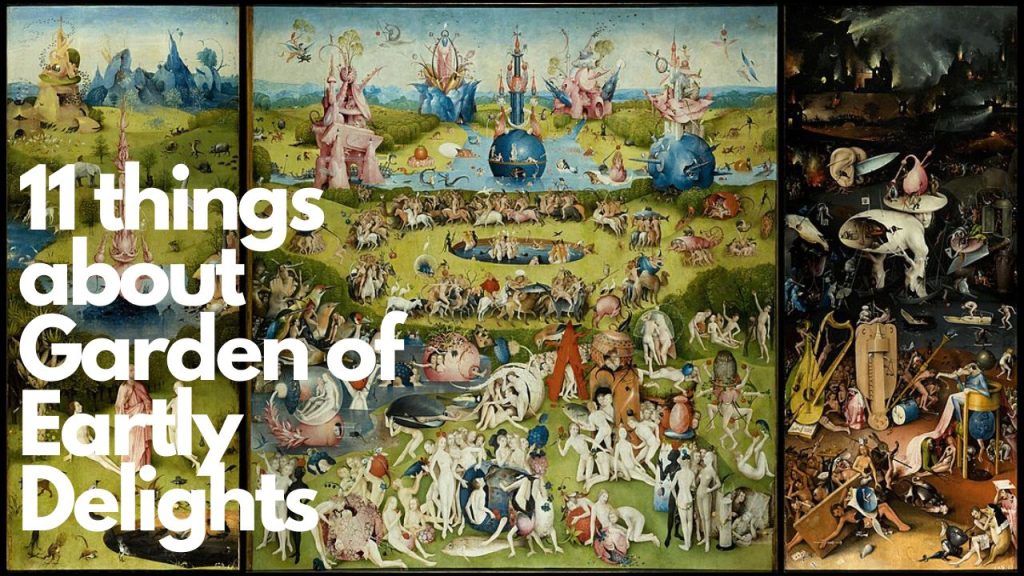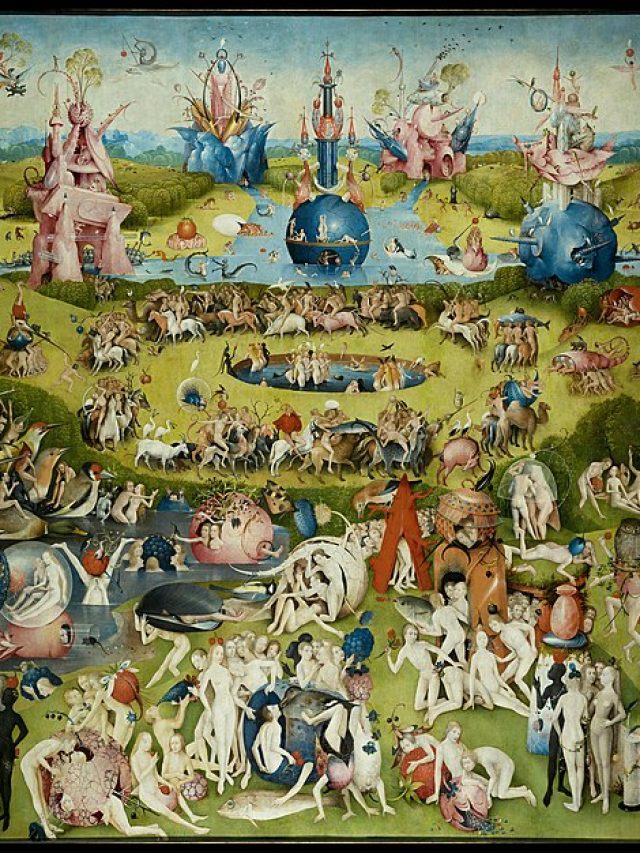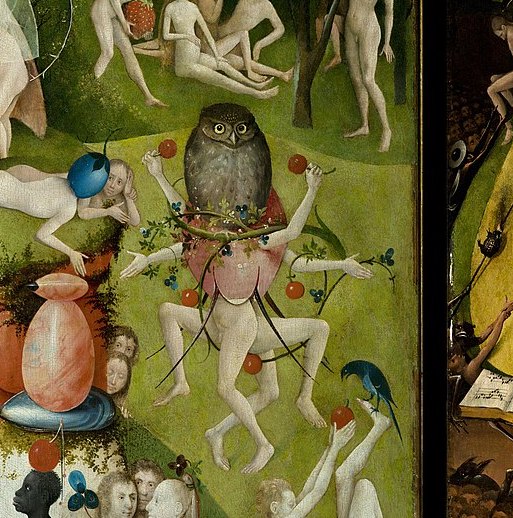The Garden of Earthly Delights, an iconic triptych painting created by the enigmatic Dutch artist Hieronymus Bosch, is a masterpiece that has enthralled and perplexed audiences for centuries. Completed around the year 1500, this intricate and surreal artwork is shrouded in mystery, inviting viewers to delve into its depths and unravel its hidden meanings.
The triptych consists of three panels that, when opened, reveal a vast panorama of vivid and fantastical imagery. On the left panel, Bosch depicts the creation of the world, with Adam and Eve in the Garden of Eden surrounded by an abundance of flora and fauna. The central panel unveils a dreamlike scene, an expansive landscape teeming with intricate details and bizarre figures engaged in alluring, hedonistic activities. It is a vivid display of human desires and earthly pleasures, where fantastical creatures, exotic plants, and naked bodies intertwine. The right panel depicts a hellscape of torment and damnation, filled with grotesque and nightmarish scenes of punishment.
Hieronymus Bosch’s Garden of Earthly Delights is a visual feast that challenges conventional interpretations and defies categorisation. Its rich symbolism, enigmatic narrative, and meticulous attention to detail have fascinated art historians and scholars for centuries. Some interpretations suggest that the triptych is an allegorical representation of human folly, a warning against the dangers of succumbing to earthly desires and temptations. Others propose that it explores the notions of sin, redemption, and the inevitable consequences of human actions.
Despite the passage of centuries, the Garden of Earthly Delights continues to captivate audiences with its sheer beauty, enigmatic symbolism, and thought-provoking themes. It serves as a testament to Hieronymus Bosch’s unparalleled artistic talent and his ability to create a visual language that transcends time and speaks to the universal aspects of the human experience.
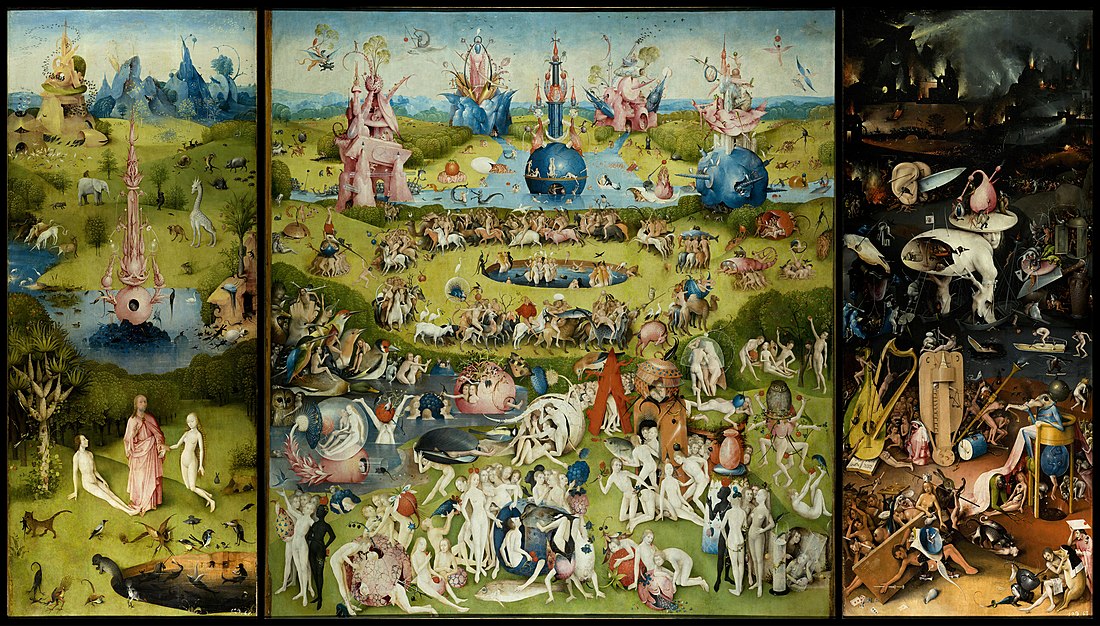
- The Garden of Earthly Delights: This triptych painting features a surreal landscape depicting various scenes of pleasure, temptation, and sin. Its intricate details and bizarre imagery have puzzled art enthusiasts for centuries, with interpretations ranging from an allegory of human folly to a depiction of the afterlife.
- The Haywain Triptych: This triptych presents a moralistic narrative, depicting the journey of a hay cart through a landscape of sin and corruption. The central panel shows people being led astray by their desires and material possessions, while the side panels depict the consequences of their actions.
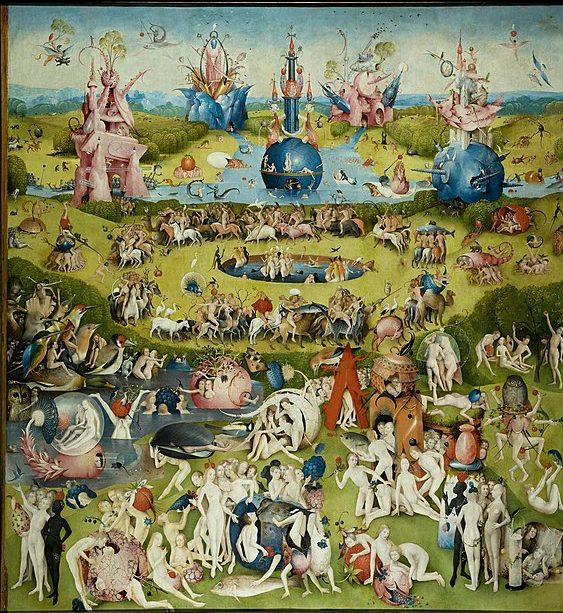
The central panel of the triptych of The Garden Of Earthly Delights Hieronymus Bosch Courtesy:wiki - The Temptation of Saint Anthony: Bosch’s painting portrays the torment of Saint Anthony the Great, an early Christian ascetic who faced numerous temptations. The artwork is filled with strange and grotesque creatures, symbolising the temptations that Saint Anthony resisted during his solitary life in the desert.
- The Last Judgment: This triptych illustrates the biblical concept of the Last Judgment, with intricate and nightmarish details. The central panel shows the judgment of souls, while the side panels depict the horrors of Hell and the joys of Paradise.
- The Ship of Fools: This painting is based on a popular medieval allegory that depicts a ship filled with fools, symbolising human folly and the moral corruption of society. The ship sails toward destruction while the fools engage in various absurd and foolish activities.
- The Extraction of the Stone of Madness: This work portrays a medical procedure from the Middle Ages where a stone is removed from a patient’s head to cure insanity. The painting is filled with bizarre and fantastical elements, reflecting the mysterious nature of mental illness in Bosch’s time.
- The Adoration of the Magi: Bosch’s rendition of the biblical scene showcases his unique interpretation. Instead of focusing on the magi and the baby Jesus, he populates the scene with an array of fantastical creatures and symbolic imagery, creating a surreal and otherworldly atmosphere.
- The Conjurer: In this painting, Bosch depicts a magician surrounded by curious and grotesque figures. The magician is shown performing tricks and illusions, while the onlookers display a mix of fascination, disbelief, and confusion. It is believed to be a commentary on the deceptive nature of human perception.
- The Cure of Folly: This artwork features a scene where a man is being cured of foolishness by having his head pierced with a funnel. The painting explores the idea of human folly and the search for wisdom in a whimsical and thought-provoking manner.
- The Ascent of the Blessed: In this panel, Bosch illustrates the concept of the ascent of the blessed souls to Heaven. The scene is filled with fantastical creatures and surreal imagery, capturing the transition from earthly life to spiritual bliss.
- The Owl’s Nest: This small painting depicts an owl perched on a tree stump while surrounded by strange and eerie creatures. The owl is often associated with wisdom, but in this context, it may represent darkness, mystery, or even death. The painting leaves room for interpretation and invites viewers to contemplate its symbolism.
These fascinating stories behind Hieronymus Bosch’s paintings highlight his imaginative genius, moralistic themes, and unique symbolism. His artworks continue to inspire and intrigue art lovers around the world.
Read Also:

Contributor

